If you’re new to the miniature painting hobby then you’re probably wondering what you need to get started. It can all be a bit overwhelming at first as everyone tells you that you need this, that, and the other thing.
So, I’m aiming to put together a comprehensive list for you of the miniature painting supplies you’ll need.
I had taken to Twitter to ask fellow hobbyists what they thought was their must-have items were. So, where appropriate I’ll reference the person and quote them to give them credit. Some people had suggested things I had already thought of, or others had suggested, so in those instances there’s no credit. Just in case anyone from Twitter is wondering why their name isn’t mentioned ;)
I’ll break this out into two sections from miniature painting supplies that everyone needs (essential), to items that are nice to have but aren’t required (luxury).
I’m also going to put this in alphabetical order to make my life easier.
Disclosure: Some of the links below are affiliate links, meaning, at no additional cost to you, I will earn a commission if you click through and make a purchase. The commission earned helps maintain this site.
Essential Miniature Painting Supplies
These are the supplies that every miniature painter will need. It’s going to cover the basics and give you a few options to consider where appropriate.
Also, there’s some painting terms used that you may not be familiar with if you’re new to painting. In that case, I’ve got a glossary of painting terms you’ll find useful.
Brush Cleaner for Clean Brushes!
When I started painting, I didn’t buy expensive brushes. I utterly destroyed every brush I touched in a few short weeks. It’s typical, don’t worry about it.
Eventually though, you’ll get better with brush control and not damaging your brushes so much.
Anyway, something that’s really useful to have is a brush cleaner, even for cheap brushes. I wish I had discovered this far sooner than I did since it would have saved me money.
The brush cleaner I like to use is The Masters Brush Cleaner and Preserver. You can pick this up at a local art store, buy it with Amazon, or through Blick (a great online art store).
You’ll find a lot of painters recommend it, and for good reason.
All you do is get your brush wet and rub it into this cleaner, working it into the bristles. It will remove dried on paint, as well as just help preserve your bristles.
Here’s my short video showing how to use it.
The Masters is super cheap to buy, lasts forever, and is a great habit to learn early – cleaning brushes. I use this at the end of each painting session and it really does work well.
Paints If You Want to Paint ;)
An obvious supply, but I have a few suggestions for newer painters.
What Not Buy
There’s a lot of choices now for acrylic paints you can use, yet there’s one I don’t recommend anyone use, and those are craft paints.
Craft paints are the really cheap ones you can find at Walmart, or any large retail chain who has art supplies. They’re often 99 cents for a big bottle of the stuff. You’ve probably seen cheap craft paint a lot and know what I’m talking about.
This stuff is terrible. It has low pigmentation (spotty coverage), it’s thick, and it wears off very easily.
I know the price is tempting, but don’t paint anything with this stuff, seriously. I know some people do use it, but they’re more experienced painters, so they know how to deal with the bad qualities of the paint. If you’re brand new to miniature painting then skip on past this.
What You Should Buy
The more popular of the painting lines you’re going to encounter are Citadel, Formula P3, and Vallejo. There’s more out there, but in my experience those are the ones you’ll likely find at any gaming shop.
Any of those paint lines will do well for you. Hell, most of us painters have some paints from every paint line. Some companies will have certain colors that work really well, better than others, so we add those to our collection.
On average a paint pot, or dropper, isn’t that expensive. Each one is cheap, but it does quickly add up.
I suggest starting out by picking up a few at a time. Each time you can, go pick up a few more paints. Eventually you’ll have a big collection and spread the cost out over time, which is much easier to handle than dumping hundreds of dollars all at once.
Painting Brushes to Paint With :)
Obviously you need paint brushes, but what brushes should you buy?
Starter Brushes
Here’s my advice. Start by getting some affordable brushes from Walmart, or a craft store like JOANN Fabrics, AC Moore, Michaels, etc. By affordable I mean a package of 5 brushes for next to nothing.
As you’re learning to paint you’re going to destroy brushes. It’s a natural part of the learning process – don’t sweat it. As such, you aren’t going to want to be using an expensive brush.
Once you’re feeling comfortable with a brush, go ahead and upgrade by getting some better brushes. I’ve found some decent ones that fit the bill at those previously mentioned stores, well except Walmart.
The Right Brush for the Right Job
It’s also worth noting that you should reserve brushes for certain types of painting. You should have a brush you use for dry brushing, a brush you use for base coating models, and then brushes for layering and details.
Certain types of painting, like dry brushing and base coating, can really damage a brush. You don’t want to use a pristine brush that’s perfect for detail work when you’re dry brushing. Likewise, the brush you use for base coating isn’t going to be great for fine detail work.
If you use the right brushes for the right job then you’ll get a lot more life out of them.
Upgrading Your Brushes
After you’ve used those brushes for a while, and you’re doing really well to take care of them, then you can start considering some higher-end brushes.
Now, there’s some brushes that are amazing and expensive that you’ll hear a lot about, like Winsor & Newton Series 7 or the Raphael 8404 brushes.
Actually, they aren’t all that expensive when you consider the quality of them and how long they last. There are painters who gets years out of one brush.
I personally have some of the Raphael 8404 brushes and I love them to death. Brush quality won’t make you a better painter but it makes the job easier.
If you’re interested in either of those brushes (Raphael or Winsor & Newton) then here’s a link to my list of recommended brushes on Blick. I recommend buying them on Blick, or another art retailer, because of issues I’ve seen people having with quality control on Amazon.
Warren Falconer had also mentioned these ones.
Kolinsky Sable Brushes from Secret Weapon Miniatures. I haven’t found another place to purchase those brushes but they are absolutely fantastic.
If you’re looking to check those out then you’ll find those here.
There are other brushes that are good and not as expensive as well. I have some of the Citadel line of brushes and they are a solid mid-line brush. The layer brushes can be bought for pretty cheap and with proper care they will last quite a while.
I do also have an article that covers painting brushes in more depth. If you don’t want to read that entire article, then here’s the quick summary of my recommendations.
CHOOSE
Your Plan
Disk Space
Databases
Domains
Users
Price
Loew-cornell
Beginner painters
Cheap
Easy to find
Low Quality
Short lifespan
3
value
citadel
intermediate painters
Inexpensive
easy to find
Good quality
Good lifespan
7
value
Raphael 8404
advanced painters
expensive
harder to find
Great quality
Long lifespan
10
value
Palette for Paints
Your paint has to go on something, and we call that something a palette.
There’s a few types of palettes, and the one you’ll most commonly see sold in stores is a dry palette. It’s usually plastic, some have wells for the paint, some don’t, but they’re very simple palettes to put paint on.
You can even get a ceramic palette. They’re a bit pricier than the plastic but are way easier to clean.
Citadel even has a paper palette they sell. I haven’t used it, but it seems like a decent option. If you’ve ever watched any of the GW painting videos then you’ll have seen them use these. They at least get you taking paint out of the pot so you can learn to thin your paints.
Now, there’s also something called a wet palette. I won’t cover that much here because I explain that more below.
Paper Towels for Messes!
When you’re cleaning your brushes you’re going to need to wipe them off on something, and paper towels are perfect for it. Also, super useful to have handy when you spill things, because you will.
Not much else needs to be said! Just make sure you have some paper towels.
Primer/Undercoating for Miniatures
I’ve done an article on the importance of primer, and with recommendations, so I’ll keep it short here.
Anything you are going to paint will need to be primed. It allows for the paint to properly stick to the surface.
I currently use Brite Touch, but I’ve also used Krylon’s black primer as well with success.
You can also find brush-on primers, like the Vallejo Primer, and Gesso, which you can find in craft stores.
Almost any primer will do the trick. The only ones I recommend avoiding are the Citadel spray primers. Those have historically been problematic for people.
Here’s a quick overview of my recommendations for primers.
Accounts
Free Trial
Projects
SSL
Gesso
$
Brush-on
Requires Mixing
Cheapest Option
Brush-on Primer
Easy Cleanup
Badger
$$
Airbrush
Use As-is
Very Affordable
Airbrush Primer
Easy Cleanup
Brite Touch
$
Spray
Use As-is
Very Affordable
Spray Primer
No Cleanup
Lighting to Paint By
If you’re going to paint then you need to see what you’re painting, right?
When I started painting I used a very basic desk lamp with a standard lightbulb in it. It worked, but it’s not what I’d recommend starting out.
If you can afford it, consider getting yourself something a bit more functional. You can find a range of hobby lights that are great and not too expensive. I did a review of the one I use as a hobby light if you’re interested.
A really popular line of lights that a lot of miniature painters use is Ottlite. It’s a really diverse line of lights ranging from smaller desk lamp size to full-on stand-up lights.
If you aren’t ready to shell out for a light then a standard desk lamp will work, but I’d recommend you get yourself an LED bulb for it.
Look for an LED bulb that has a color temperature of between 4500K – 5000K. You’ll see the color temperature on the package. That will get you a bright white that’s not too yellow (lower temperature), and not too blue (higher temperature).
I suggest an LED bulb because it’s capable of reaching the color temperature I suggested, and I like how they light. A standard light is too yellow, the color temperature is too low, though you can find some with a higher temp. You can try CFLs, some can reach the right temperature, but I’ve never been a fan of how they light objects.
If you want some more info on lighting, complete with examples, check out Dave’s article on Wargaming Tradecraft.
Sealer to Protect Your Work
Once you’ve painted a model, or models, you’re going to want to protect them. If you don’t use a sealer on your models then the paint will eventually wear off from use, assuming you’re a miniature wargamer that is.
You could get away with not sealing a model if it’s not for wargaming, IE: constant touching, but I always recommend sealing regardless to protect from accidental dropping and fading from light.
A good sealer will really protect your models for a lifetime. Nobody wants to spend hours painting a model and have the paint wear off or get damaged.
My favorite sealer is Testors Dullcote. This stuff is expensive for the size, I won’t lie, but it has an amazingly matte finish to it. I use this on everything.
You can find Testors Dullcote in most stores that sell model kits, like cart kits, plane kits, traditional modeling. A lot of craft stores also carry it.
If you want a less expensive solution, then I’d recommend the Krylon’s matte sealer. I used this for years before I discovered Dullcote. You can pick this up at most major retail stores that sell spray paints.
You can find a lot of choices for sealers, and most of them will do the job well. The important thing is that you seal your models.
I do also have a quick breakdown of my recommendations for sealers too.
CHOOSE
Your Plan
Disk Space
Databases
Domains
Users
Email Accounts
Vallejo
brush-on
CHeap
Brush-on
Dries dull
Good quality
hard to find
Krylon
spray
cheap
spray
dries dull
good quality
Easy to find
Testors
spray
Expensive
spray
dries dullest
great quality
easy to find
Water Pots to Keep Them Brushes Clean
I know this is obvious to most, but it doesn’t mean it’s not worth mentioning!
You’re going to need to clean your brushes as you paint, so you need something to hold water. It can be something as simple as a coffee mug that you fill with water, or it can be an actual water pot that you bought – I got mine at a local art store. There’s even some that have brush holders built in so that the brush tip is always in water.
Oh, I’d also recommend you get two water pots. Use one for normal paints and the other for metallic paints. That way you won’t get floating metallic flakes in your brush when you’re painting non-metallic stuff. I learned that one the hard way.
If you want to get real fancy, you can even get a 3rd water pot to use for clean water to thin paints with. Not really required, but no reason not to have one either ;)
Luxury Miniature Painting Supplies
For many of us painters these are must-haves, but in reality they aren’t things required to start miniature painting.
So, below are a list of supplies that you don’t need to have but will eventually want to have. Some of them are useful tools to make painting easier and faster, while others will improve your painting.
I’m calling them luxury items because some may be expensive, while others are simply a luxury to have.
Airbrush to Save Time & Work
I will admit that I do not have an airbrush. However, even without having one I know full well how useful a good airbrush can be.
Many people think of an airbrush as a way to do some advanced painting techniques easy, and it’s true. Yet, the things that are often overlooked are the basics like laying down a solid base coat, shading a model, priming, and sealing a model.
Using an airbrush can really speed up some basic processes, especially if you’re doing batch painting.
As I said, I don’t own one, and I’ve been painting miniatures since 2006, so it’s not required, but everyone I know who owns one will swear by it.
If you’re interested in an airbrush then I definitely recommend doing your homework. Here’s a thorough guide to airbrushes from reddit.
Also, here’s a great video that explains the setups, walks you through it, and gives recommendations.
Comfortable Chair for Painting Sessions
Aleksandra from Twitter had suggested this.
A comfortable (adjustable a plus) chair. My neck & back hurt horribly painting til I got a good chair.
She’s absolutely right too. If you’re lucky enough to have the time, you can spend hours at a time in a chair painting. Many of us have horrible posture too while we do it, so a good chair will go a long way towards keeping you from hurting for sure.
Dedicated Work Space to Make Life Easier
Sim Lauren had this awesome suggestion.
A dedicated work spaces even if it’s portable. Have somewhere to paint. Have it easy to pack & unpack / tidy so you can paint for at least 15-20 mins a day when you start.
I couldn’t agree more with her. A lot of us don’t get to paint as often as we’d like. So, having a space you can go to and just start painting when you have time is great. If you’ve only got 20 minutes to paint then you don’t want to spend 5-10 minutes of it setting up your painting supplies.
The trick to painting and getting things complete is to chip away at it, 5-10 minutes as you can, and this is how you do that.
If you don’t have a dedicated space to paint at then you can buy portable paint stations. That way you can leave all your stuff setup on it and then bring the paint station to where you need it.
You can find some really affordable painting stations that use laser cut MDF, and you can get more expensive ones, like the Citadel Project Box. The advantage to the Citadel one is that everything encloses into a box for easier storage later.
Glazing Medium for Thinning
As you get more experienced with painting you will learn about glazing and blending.
A glaze medium will let you create glazes from normal paints, and it’s also really useful to thin paints for blending.
It’s one of those things I discovered years after I started painting and wished I had discovered sooner.
You can find the Citadel Lahmian Medium in most game shops. That’s what I use and I’ve had great luck with it.
There are also glazing mediums you can find in art stores as well that work great. The ones you’ll find in an art store will give you more of it for a cheaper price, so it’s worth checking out if you’re trying to save some cash. Game shops charge a premium, not surprising.
Dave G had this to say.
I prefer @Liquitex clear slow-dry medium and it’s probably far cheaper, but Lahmian is definitely more accessible to our hobby.
You can find this at art stores, as mentioned, and online as well.
Painting Desk/Table to Work On
From Twitter, Predrag Vasiljevic mentioned a painting desk. It’s something I had not thought of, but he’s completely right.
Alkohol? :) right, all jokes aside, a desk you can ruin. I find it easier to work anything when i’m not worried that the surface i’m working on (or the one below it) needs to be preserved. an old desk that can handle paint, scalpel cuts, spills, dremel accidents… the works
As you probably know, painting can be a pretty messy hobby. There are simply times when you’re going to get paint everywhere, intentional or not, and having a painting desk that you don’t care about getting paint on is really useful.
Painting is a very creative process, and to me that means it’s something free and liberating. If I have to constantly worry about getting paint on a table, desk, or surface then I find that counter-productive to the creative process.
My wife found my painting table at a yard sale one summer. She got it for free, and it’s just a very simple table that’s around 3′ x 2′ and works perfectly. It was free, it’s only goal in life is my painting desk, so I have no fears with painting on it.
So, do yourself a favor and get something you don’t mind ruining that you paint on. Trust me, it will be worth it.
Painting Handle for Your Miniatures
Most of us start painting miniatures by holding the model directly while we paint. I did this forever until I got myself a Citadel Painting Handle. Man, did that thing change my life.
A painting handle will allow you to paint a model without directly handling it.
The advantage is that you’re less likely to accidentally break parts of the model (done that countless times), as well as you won’t accidentally wear off paint from constant touching. Once you’ve painted a few models you will know what I mean by the latter.
I highly recommend getting one of these. The Citadel handle is extremely affordable.
CHOOSE
Your Plan
Disk Space
Databases
Domains
normal
Standard
Easy to Use
Cheap
25 - 40mm bases
XL
Bigger Bases
Easy to use
cheap
55 - 105mm bases
Assembly
assembly arms
easy to use
Cheap
25 - 40mm bases
Blu Tack
An alternative to having an actual painting handle is to get yourself some Blu Tack (Walmart, craft stores, or most hardware stores), and use it to stick your model to the surface of something, like a bottle cap, empty paint pot, or prescription bottle.
Doing that will give you the same advantages of a painting handle and it can be really useful in batch painting.
That being said, I personally recommend a painting handle. A painting handle is more secure and easier to manage, but Blu Tack is a tried and tested method by many miniature painters as well.
Also, Blu Tack is just handy to have for modeling projects as well. It lets you test fit parts on models to try different poses and such.
Wet Palette for Better Painting
I almost put this in the must-have list, but the reality is you don’t need a wet palette, but man do you want one. This is the single biggest thing that changed how I painted.
A wet palette will keep your paints moist and prevent them from drying out on you while you work. Not only does this save you money (less wasted paint), it helps you with learning blending.
See, a wet palette will make thinning out your paint very easy, and thin paint is the key to blending.
While blending may be more advanced, and not something you’re trying yet, knowing that a wet palette is fundamental to it, and also useful for beginners to painting, is a great reason to get one.
Now, you can buy a wet palette, but most of us just make our own since it’s cheaper.
Paint Storage/Organizer
This is one of those things I didn’t do for the first 13 years of my painting “career” – organize my paints. Like most, my paints were a haphazard assortment of stuff that was piled on my desk. I know others who shove their paints into drawers – whatever works.
One day I got tired of it all. It had become impossible to find the paint I needed while I was painting, so I went out and bought myself some great acrylic racks to organize my paints.
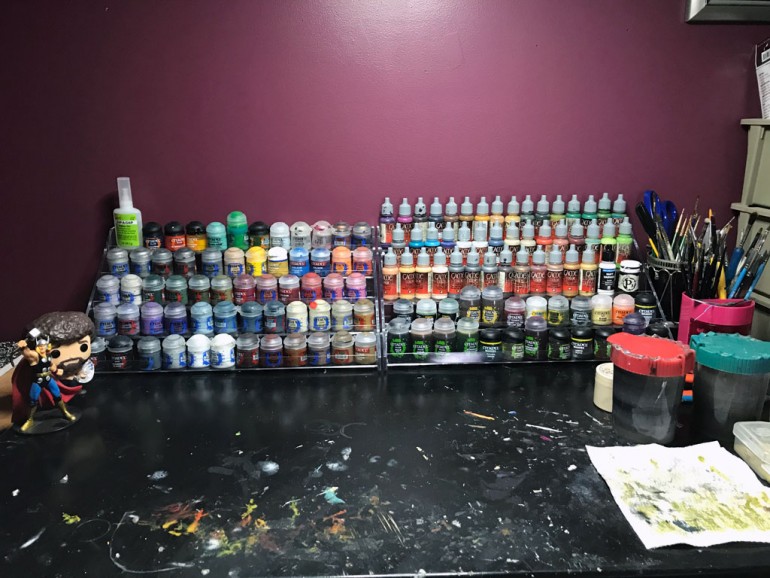
I can’t tell you how great it is to have these all sorted and organized. I can now focus on painting and not on finding the paint!
I picked those racks up off Amazon for really cheap. I highly recommend them.
Anyway, it’s not something you need to have but you’ll be glad you did.
If this is something you’re really interested in, then check out my list of paint storage racks from my other blog. Over there I go into more detail on racks and storage solutions for getting organized.
Conclusion
Miniature painting is a pretty inexpensive hobby to get into if you buy the right tools and stick to the basics. Like any hobby, it can get expensive, but usually it’s a slow build and you aren’t buying everything at once.
I know when I got into painting I would have loved to have found a list like this. Speaking of, I also have a glossary of miniature painting terms that’s super helpful to new painter.
If you’re after miniature hobby supplies then I’ve got a list for that too. That list is very much like this where it has the essentials you need, as well as the more expensive stuff you don’t need but sure is nice to have.
Also, if you’re looking for ways to improve as a miniature painter then I’ve got you covered. That article talks about all the little things you can do to improve, and it’s not about the tools you use or the techniques either. It’s about you, the painter, and something everyone can benefit from.
I’ve also written an article with tips for beginner painters to help them avoid the mistakes I made when learning to paint.
Lastly, I’ve got a great list of common painting mistakes to help newer painters. We all make mistakes when we learn, it’s the best way to learn in my opinion. So, my article talks about all those things I’ve learned and seen to help guide you as you learn.
If anyone has suggestions they’d like to share for miniature painting supplies then let me know in the comments and I’ll gladly add it to the list.
Hobby Supplies, Tips & Tutorials
Various tutorials and guides for common hobby supplies.
- Creative Twilight’s Future and My Thoughts (Feedback Welcomed!) - December 4, 2021
- My Top Gift Ideas for Miniature Painters & Hobbyists + Gifts to Avoid - December 2, 2021
- The Year That Was 2020 and Where I’ve Been - January 17, 2021


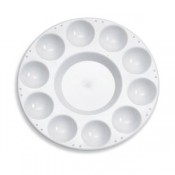


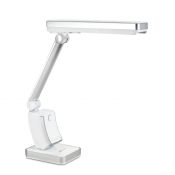



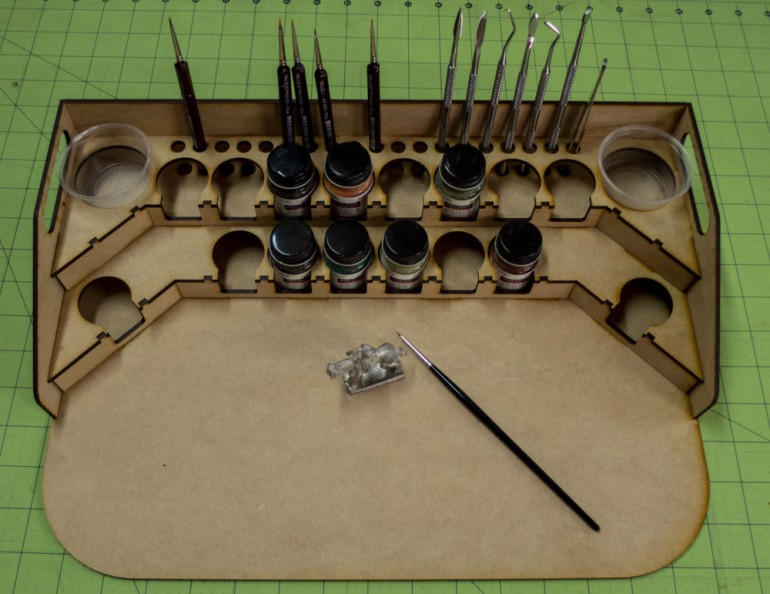
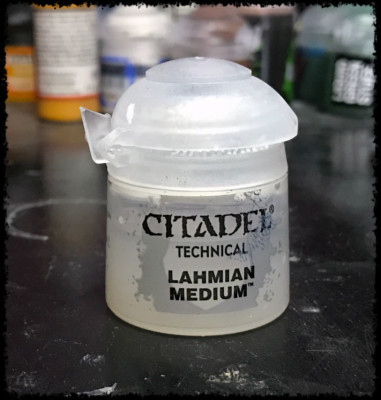
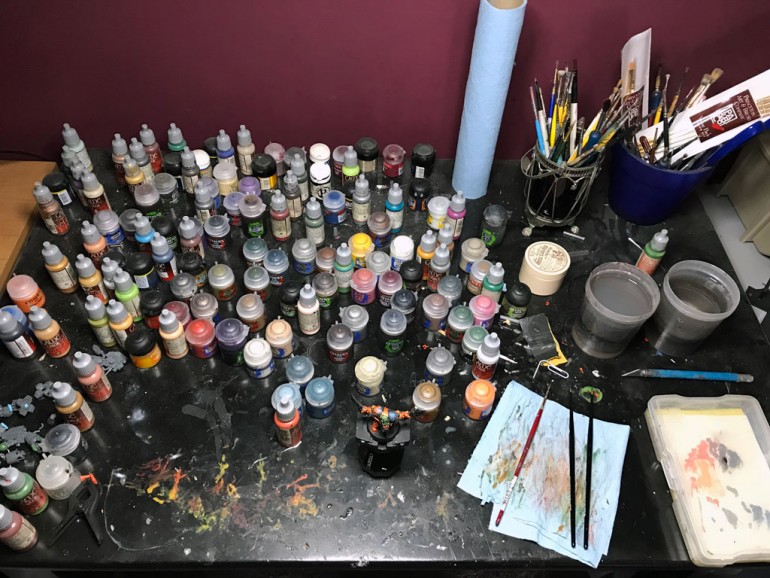
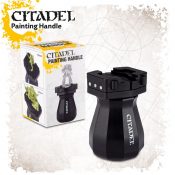

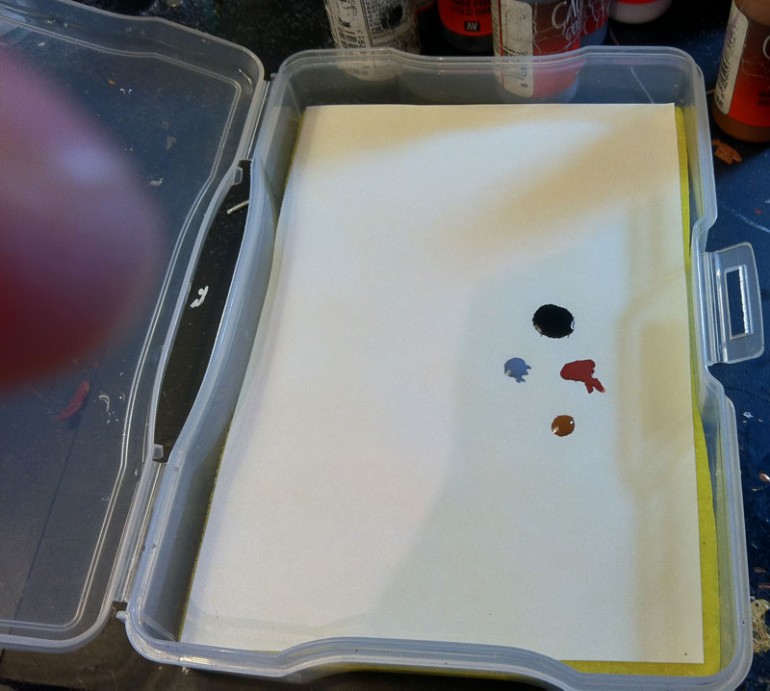


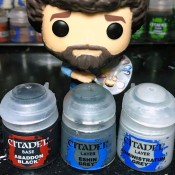
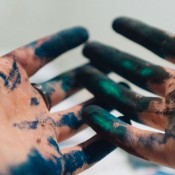
Great article. Thank you for sharing your experience.
Thanks.
I did a lot of research when I started painting, and still do now, so giving back to the community is something I always enjoy doing. We’ve all got something worth sharing.
Shared on twiter and facebook
I really appreciate it!
Thanks Thor, this is a great intro article to painting. I am going to link this to my forum thread it’s that useful
Awesome. I appreciate it!
I’m sure I’ll keep adding to it as well. I’ve already updated it like 4 more times with feedback from Twitter.
I have two categories of brushes: Super cheapo (like less than a dollar each) for stuff like drybrushing, large-scale basecoating, and such, and then a couple of $5-10 brushes for more detailed stuff. I’ve always been perfectly happy with the GW brushes for that category, and once I learned how to take care of them, they last me at least a couple of years each, through some heavy use, and sometimes indifferent care. But there are plenty of other brands available in that range that are totally comparable. If I were really into doing fine detail work, I’d get a couple of more expensive ones as well, but for tabletop standard, this is plenty, and I wouldn’t recommend that a new painter go beyond this level.
I really don’t recommend using a mug or glass for rinse water. Much better to use something that isn’t the same form as a container you might actually want to drink from. Any additional steps to minimize the chances of accidentally taking a swig of rinse water are worthwhile. I use an old glass jar, but for some hipsters, that might still have that problem ;)
Blu-tac is amazingly handy stuff. Even if you do have a painting handle, I recommend getting some, for test-fitting conversions, making options swappable when the join is completely hidden (e.g. Dreadnought arms) without needing magnets, or holding models on a stick or board for priming.
Ironically, I gave up on sealing my models because I ruined far more of them with foggy coats of sealant than I’ve had damaged in ways that sealant would actually protect against. Not sure what the problem was there, but it completely put me off spray sealants.
I’m the same with brushes. I have two containers full of shitty brushes for shitty jobs. It’s how you keep the good brushes in great shape.
Some day I will get some really nice brushes, until then, as I said, the GW ones are doing well. I know they get shit on, and I avoided them because of that, but like anything – actually trying them showed me they are reasonably good brushes.
lol – Good call on the hipster glass gar ;)
I do use blu tack for modeling. It’s all I use it for, and it is awesome for test-fitting.
What sealer were you using, if you recall? I’ve only once had an issue with a sealer, and I never used that sealer again. Also, what’s your spraying conditions? You in a humid area, dry, cold, etc?
I used a couple of different types. Krylon and Dullcote, and I think at least one more. It is pretty much always fairly humid here. Not so much as some places, but it rarely gets below like 40%, and goes up to 80-90% sometimes.
Hmm. Interesting. Never had an issue with either. Actually, Krylon has an artist’s matte sealer that I had issues with, but their standard one was fine.
We have varying weather here in the northeast, but I also spray inside in my basement. So, while it may be wet or humid, the basement is pretty moderate.
Yeah, I’ve got a very small apartment on the top floor of my building. Nowhere I can spray but out on my balcony. So I’m pretty much at the mercy of the weather.
Awesome post! I can advice also to think that water is important: I generally use clean or exhausted water (used for a lot of painting), depends on what you prefere to have as a result. Dirty water is amazing for a dull finish! Someone used distilled water also -the opposite of me-.
Have you already done some post like this with “software” than “hardware”? Like ideas about how to approach painting (study of the miniature, taking the right time..) or mods and so on.
I always seal my models after, so I never thought about the finish while painting, but you’re right.
I haven’t done any real articles like that yet, but it’s a good idea. I feel you can accomplish a lot with the right knowledge even if your tools aren’t great.
I’ve found myself in the market for a project box.
I checked out that fancy GW box, but that price is a killer. I’m currently on a quest for an Art Box Sidekick to see if it’ll work for me.
Now that I’ve finished renovating our living room, my hobby supplies and WIP models have been banished from sight and into a box where they can’t sully the view of the room. Lol.
Yeah, that GW set isn’t cheap. Certainly not their most overpriced item though.
You not using that roll up desk you had?
The desk is up in my “office,” aka my hockey equipment and 40k storage room.
There’s no electricity or heat in there, so I’ve been painting in the living room since 2015.
I won’t get a chance to renovate that room for a few years.
Gotcha.
Man, farm life is fun! ;)
Thank you!
No idea how I missed this reply, but you’re welcome :)